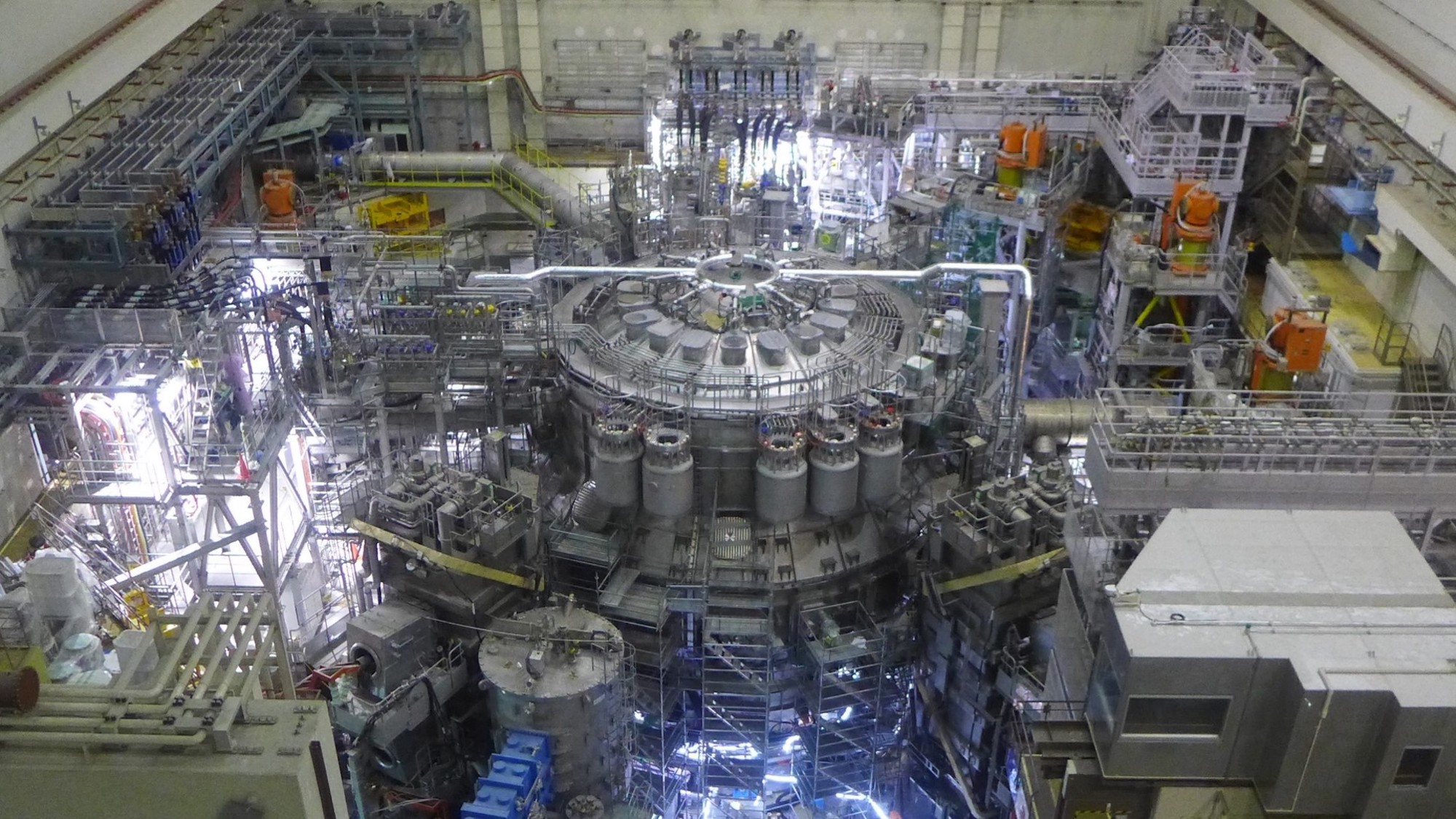

Japan and the European Union have officially inaugurated testing at the world’s largest experimental nuclear fusion plant. Located roughly 85 miles north of Tokyo, the six-story, JT-60SA “tokamak” facility heats plasma to 200 million degrees Celsius (around 360 million Fahrenheit) within its circular, magnetically insulated reactor. Although JT-60SA first powered up during a test run back in October, the partner governments’ December 1 announcement marks the official start of operations at the world’s biggest fusion center, reaffirming a “long-standing cooperation in the field of fusion energy.”
The tokamak—an acronym of the Russian-language designation of “toroidal chamber with magnetic coils”—has led researchers’ push towards achieving the “Holy Grail” of sustainable green energy production for decades. Often described as a large hollow donut, a tokamak is filled with gaseous hydrogen fuel that is then spun at immense high speeds using powerful magnetic coil encasements. When all goes as planned, intense force ionizes atoms to form helium plasma, much like how the sun produces its energy.
[Related: How a US lab created energy with fusion—again.]
Speaking at the inauguration event, EU energy commissioner Kadri Simson referred to the JT-60SA as “the most advanced tokamak in the world,” representing “a milestone for fusion history.”
“Fusion has the potential to become a key component for energy mix in the second half of this century,” she continued.
But even if such a revolutionary milestone is crossed, it likely won’t be at JT-60SA. Along with its still-in-construction sibling, the International Thermonuclear Experimental Reactor (ITER) in Europe, the projects are intended solely to demonstrate scalable fusion’s feasibility. Current hopes estimate ITER’s operational start for sometime in 2025, although the undertaking has been fraught with financial, logistical, and construction issues since its groundbreaking back in 2011.
Experts alongside Simson believe creating sustainable nuclear fusion would mark a revolutionary moment that could ensure an emissionless, renewable energy future. Making the power source a feasible reality, however, is fraught with technological and economic hurdles. Researchers have chased this goal for a long time: The world’s first experimental tokamak was built back in 1958 by the USSR.
While researchers can now generate fusion energy at multiple facilities around the world, it is usually at a net loss. By advancing the technology further at facilities like JT-60SA, however, industry experts think that it is only a matter of time until fusion reactors regularly achieve net energy production gains.
[Related: Colorado is getting a state-of-the-art laser fusion facility.]
In the meantime, another possible road to fusion energy is making its own promising gains. Earlier this year, the National Ignition Facility (NIF) at Northern California’s Lawrence Livermore National Laboratory achieved a net energy gain for the second time using what’s the inertial confinement fusion method. In this process, a high-powered laser is split into 192 beams that then hit a capsule containing a pellet of tritium and deuterium. The resultant X-rays generate pressure and temperatures that then initiate fusion.
No matter which process—be it tokamak reactors or ICF lasers—a successful nuclear fusion facility could play a major role in finally shifting humanity away from fossil fuels.
